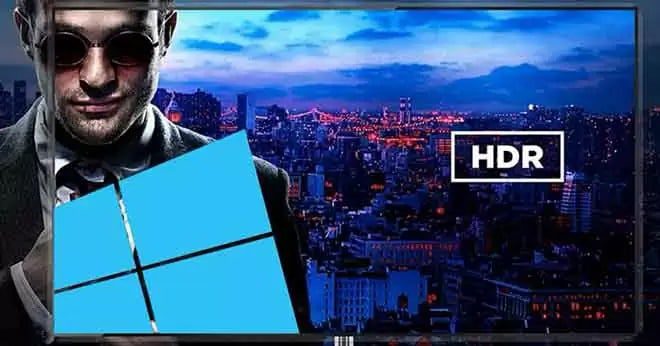So can we configure HDR in Windows 10 for a better experience? Connecting our PC or laptop to a monitor or TV is something more and more common, especially when we want to see some content or enjoy a video game on the big screen.
Now, connecting to a television or monitor with a high dynamic range or HDR means we can enjoy higher quality images if our Windows 10 computer supports HDR and a wide range of WCG colors.
Today we can find many HDR compatible applications and games, even in the Microsoft Store, but to enjoy them in the highest possible image quality, we need to have a screen that meets the corresponding hardware requirements and is configured correctly.
In the case of the screen, we need one that has a resolution of at least 1080p and a minimum brightness of 300 nits. Now, in the case of our computer, we need to have integrated graphics that support the digital rights management of the PlayReady hardware for HDR content and that the necessary codecs for 10-bit video decoding are installed.
Set up HDR in Windows 10
If our equipment and screen support HDR, these are the steps to follow to set it up:
- Let’s open the Windows 10 Settings page.
- Let’s go to System> Screen.
- If we have several displays connected to the computer, we choose the one that supports HDR.
- We select the Windows HD Color Configuration option.
- Under Display Features, we make sure the Use HDR option is turned on.
Playing HDR content on our laptop can significantly reduce battery life, so our equipment manufacturer may disable this option by default. However, we can change the configuration from the power options whenever we want. For this:
- Let’s open the Windows 10 Settings page.
- We enter the system.
- Let’s click on the Display option.
- We select a screen with the possibility of HDR in multiple screens.
- Click Windows HD Color Setup.
- In Battery options, we uncheck the box Do not allow HDR games and applications when running on battery.
If HDR is already enabled when the laptop is plugged in, HDR will remain enabled if we unplug the computer and it runs on battery.
Most common problems when setting up HDR in Windows 10
HDR does not appear on screen or TV
In this case, what we need to do is make sure that HDR is activated correctly on the screen or television. If necessary, we will have to consult the instructions of both devices to perform the check. Also, it is convenient to review the configuration in Windows 10 to verify that the Use HDR option is enabled in Windows HD Color and that our computer meets the hardware requirements to play this type of content.
I can’t turn on the Use HDR option
If we use a laptop, HDR compatible equipment will disable the default HDR power setting when we use the battery. In this case, what we are going to do is go to system settings> Display> Windows HD color settings and in the battery options, uncheck the box Do not allow HDR games and applications when on battery.
The Use HDR button is not displayed
When we connect an external display to our laptop, the first time the system itself will duplicate the desktop to both displays by default, however HDR is not supported in this configuration. Therefore, in order to view the HDR content, what we will need to do is expand the desktop between both screens. From the Configuration> System> Screen page, within Several screens we select the option Extend these screens.
Colors are not displayed correctly
The color may not be displayed correctly and, for example, stripes of color appear around vertical strokes. In this case, what we need to do is make sure that we have duly updated the drivers for our graphics, if we use an HDMI connection and the display supports HDR through the DisplayPort connection, we must try to use this connection to connect the equipment to the display.
However, if our only option is HDMI, we can try reducing the frame rate from Settings> System> Display> Advanced Display Settings and then go to Display Adapter Properties. We select the Monitor tab and indicate 30 Hz as the screen refresh rate.
We can also try to reduce the resolution. To do this, go to Settings> System> Display> Advanced Display Settings and then select Display Adapter Properties. In the Adapter tab we select Show all modes and in List all modes we choose a lower resolution and click OK to save the changes.

